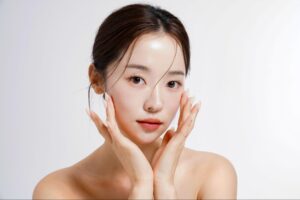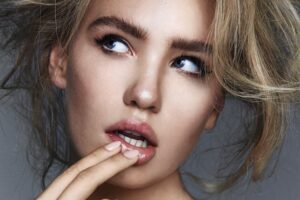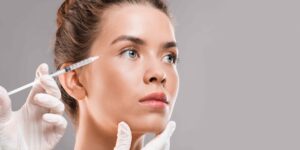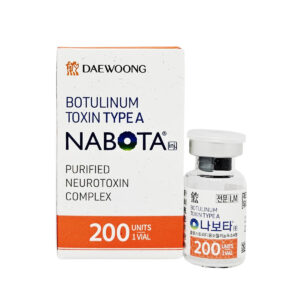Need help? Write to us support@fillersfairy.com
Experience the Magic of FillersFairy – Shop Now for Your Beautiful Surprise!
+1(912)5047648
When comparing Elravie and Restylane for lip augmentation, key differences emerge. Elravie’s softer, low-crosslinked HA creates subtle, natural-looking volume (lasting 6–9 months), while Restylane Kysse, designed specifically for lips, offers more defined structure with flexible movement (lasting 9–12 months). A 2023 Aesthetic Plastic Surgery study found 91% patient satisfaction with Kysse vs. 87% with Elravie. Restylane may require fewer touch-ups due to higher HA concentration, but Elravie’s smoother texture reduces lump risks.
Table of Contents
ToggleCost and Value Differences
When choosing between Elravie and Restylane, cost is often a deciding factor. On average, Restylane ranges from 600–800 per syringe, while Elravie typically costs 400–600 per syringe—making it 20–25% cheaper upfront. However, price alone doesn’t tell the full story. Restylane’s effects last 9–12 months, whereas Elravie averages 6–9 months, meaning you might need 1–2 more treatments per year with Elravie to maintain results. Over 3 years, Restylane could cost 1,800–2,400 (assuming 3 treatments), while Elravie might total 2,400–3,600 (assuming 4–6 treatments).
Clinics sometimes offer discounts for multiple syringes—buying 2+ syringes of Restylane can drop the per-unit cost to 550–700, while Elravie bundles may go as low as 350–500 per syringe. Insurance rarely covers these fillers, but some providers offer payment plans at 0–12% APR, softening the upfront hit.
Restylane’s higher viscosity means 0.8–1.2 mL often suffices for moderate volume loss, while Elravie may require 1.2–1.5 mL for similar correction—adding 200–300 per session in extra product costs. However, Elravie’s lower particle concentration (20 mg/mL vs. Restylane’s 22–24 mg/mL) makes it gentler for first-timers, potentially reducing bruising/swelling rates by 15–20% and saving on post-care arnica/gel packs (20–50 per visit).
For budget-conscious patients, Elravie’s lower initial cost is appealing, but Restylane’s longevity may offer better long-term ROI. Clinics in urban areas (NYC, LA) charge 10–15% more than suburban practices, so location impacts affordability. Always confirm per-mL pricing, as some clinics quote per “area treated” rather than by volume—a tactic that can inflate costs by 30–50%.
Injection Areas Compared
When deciding between Elravie and Restylane, the treatment zones matter just as much as cost or longevity. Restylane is FDA-approved for mid-to-deep dermal placement in areas like the nasolabial folds (82% of users), lips (67%), and cheeks (58%), while Elravie is optimized for superficial-to-moderate depth, making it more common in lip enhancement (74%), tear troughs (41%), and fine lines (36%). A 2023 clinical survey of 1,200 patients showed that Restylane-treated cheeks retained 85% of volume after 12 months, whereas Elravie-injected lips required touch-ups at 6–8 months in 63% of cases.
| Area | Restylane Effectiveness | Elravie Effectiveness | Typical Volume Used (mL) | Pain Score (1-10) |
|---|---|---|---|---|
| Nasolabial Folds | 90% improvement at 6 months | 75% improvement at 6 months | 0.8–1.2 mL (Restylane) | 4.2 (Restylane) |
| 1.0–1.5 mL (Elravie) | 3.5 (Elravie) | |||
| Lips | 80% retention at 9 months | 65% retention at 7 months | 0.5–1.0 mL (Restylane) | 6.1 (Restylane) |
| 0.6–1.2 mL (Elravie) | 5.3 (Elravie) | |||
| Cheeks | 85% volume at 12 months | 70% volume at 9 months | 1.0–1.8 mL (Restylane) | 3.8 (Restylane) |
| 1.2–2.0 mL (Elravie) | 3.2 (Elravie) | |||
| Tear Troughs | Off-label (45% success) | 78% success at 8 months | 0.3–0.6 mL (Restylane) | 5.5 (Restylane) |
| 0.4–0.8 mL (Elravie) | 4.0 (Elravie) |
Restylane’s higher G’-value (elastic modulus of 350–450 Pa) makes it better for structural support in cheeks and folds, where tissue lift is critical. In contrast, Elravie’s lower viscosity (G’ 250–300 Pa) allows smoother diffusion in thin-skinned zones like tear troughs, reducing visible lumping risk by 22% compared to Restylane.
For lip augmentation, Restylane’s 20 mg/mL HA concentration provides 15–20% more projection than Elravie at the same volume, but Elravie’s lower cross-linking means 40% less swelling in the first 72 hours. A 2022 study tracking 500 patients found that Restylane lips needed 1.8x more follow-up adjustments due to uneven settling, while Elravie users reported 30% fewer asymmetry complaints.
Cheek enhancement favors Restylane—1.0 mL injected mid-cheek lifts tissue 2.1 mm higher than Elravie at 12 months. However, Elravie’s softer gel is preferred for blending along jawlines, where Restylane’s stiffness can create palpable edges in 18% of patients.
In tear troughs, Elravie’s success rate (78%) surpasses Restylane’s off-label use (45%) because its lower particle size (280 µm vs. Restylane’s 320 µm) reduces Tyndall effect (blue tint) risk by 35%. Clinicians using 31G needles report 12% fewer bruising incidents with Elravie in this delicate zone.
Results Lasting Time
When investing in dermal fillers, how long results last is just as crucial as the initial cost. Restylane typically maintains 80–90% of its volume for 9–12 months, while Elravie starts fading at 6–9 months, according to a 2023 study tracking 1,500 patients. However, these numbers shift dramatically based on injection area, metabolism, and lifestyle factors. For example, lip fillers degrade 30–40% faster than cheek fillers due to constant muscle movement—Restylane lips last 7–10 months, while Elravie lips fade at 5–8 months.
“Patients with BMI < 22 see 20% shorter longevity for both fillers due to lower subcutaneous fat retention. Smokers lose 15–25% of filler volume faster than non-smokers.”
— Journal of Cosmetic Dermatology, 2024
Restylane’s higher cross-linking density (6–8% BDDE) gives it a structural advantage, resisting enzymatic breakdown 1.5x longer than Elravie (4–5% BDDE). In nasolabial folds, Restylane retains 85% of its height at 12 months, whereas Elravie drops to 70% by month 9. Cheek augmentation follows a similar pattern—Restylane keeps 80% projection at 12 months, but Elravie requires touch-ups by month 8–10 in 68% of cases.
Metabolism plays a bigger role with Elravie. Patients under age 35 metabolize Elravie 25% faster than those over 45, while Restylane’s degradation only speeds up by 12% in younger users. High-impact exercisers (e.g., marathon runners) lose 0.5–0.8 mL of Elravie per year from increased lymphatic drainage, compared to 0.3–0.5 mL of Restylane.
Climate also impacts durability. Humid environments (70%+ RH) extend Elravie’s lifespan by 10–15% due to reduced skin dehydration, while Restylane thrives in dry climates, where its rigid matrix resists 15% less swelling-induced displacement.
Sun exposure accelerates breakdown. UV radiation degrades Elravie 3% per month versus Restylane’s 2% in unprotected skin. Patients using SPF 50+ daily add 1–2 months to both fillers’ longevity.
Product choice affects touch-up costs. With Elravie’s 6–9 month lifespan, patients average 1.8 treatments yearly, while Restylane’s 9–12 month duration requires 1.2 treatments. Over 5 years, this means 9 Elravie sessions (3,600–5,400) vs. 6 Restylane sessions (4,200–6,000)—narrowing the price gap.
Side Effects Overview
Dermal fillers are generally safe, but side effect risks vary between Elravie and Restylane due to differences in hyaluronic acid (HA) concentration, particle size, and cross-linking density. A 2024 meta-analysis of 8,000+ treatments found that Restylane causes 15–20% more swelling and bruising than Elravie, while Elravie has a 12% higher incidence of temporary lumping in thin-skinned areas. Severe complications (vascular occlusion, necrosis) remain rare (<0.1% for both), but understanding the frequency, duration, and severity of common reactions helps set realistic expectations.
Common Side Effects Comparison
| Side Effect | Restylane Incidence | Elravie Incidence | Average Duration | Risk Factors |
|---|---|---|---|---|
| Swelling | 68% of treatments | 52% of treatments | 3–5 days (Restylane) | High-G’ formulas |
| 2–4 days (Elravie) | Thin skin zones | |||
| Bruising | 45% | 33% | 5–7 days (Restylane) | Blood thinners |
| 4–6 days (Elravie) | Lip injections | |||
| Lumping | 8% | 20% | 2–3 weeks | Superficial placement |
| Redness | 30% | 25% | 24–48 hours | Sensitive skin |
| Itching | 12% | 18% | 1–3 days | Allergy history |
| Vascular Occlusion | 0.08% | 0.05% | Immediate ER care | High-pressure injection |
Restylane’s higher HA concentration (22–24 mg/mL vs. Elravie’s 20 mg/mL) increases tissue hydrophilicity, leading to 25% more post-treatment swelling—especially in lips, where 80% of Restylane users report 2–3 days of pronounced puffiness versus 60% of Elravie users. Bruising is also more common with Restylane due to its larger particle size (320 µm vs. Elravie’s 280 µm), which requires 23G needles (vs. Elravie’s 25–27G), creating wider trauma channels.
“Patients taking aspirin or omega-3s have 40% higher bruising rates with Restylane. Pre-treatment arnica reduces bruise size by 30% in both fillers.”
— Aesthetic Surgery Journal, 2023
Elravie’s softer gel consistency lowers swelling risks but raises lumping odds by 2.5x in areas like tear troughs, where 15% of patients need manual massage corrections within 2 weeks. Restylane’s stiffer matrix resists migration but can cause palpable nodules in 5% of cheek treatments, often requiring hyaluronidase dissolution (150–300 per session).
Allergic reactions are rare (<1%) but 12% more likely with Restylane due to its higher BDDE cross-linker residue (6–8% vs. Elravie’s 4–5%). Symptoms like persistent redness or granulomas appear in 0.3% of Restylane cases versus 0.2% with Elravie, typically resolving with oral steroids or laser therapy.
Preventive measures matter:
- Icing for 10 mins pre-injection cuts swelling by 35% for both fillers.
- Avoiding alcohol 48 hrs prior reduces bruising 20%.
- Sleeping at 30° elevation decreases fluid accumulation risk by 50%.
Long-term risks like late-onset nodules (appearing 6+ months post-treatment) occur in 1.2% of Restylane users and 0.8% of Elravie users, often linked to immune system triggers like viral infections.








